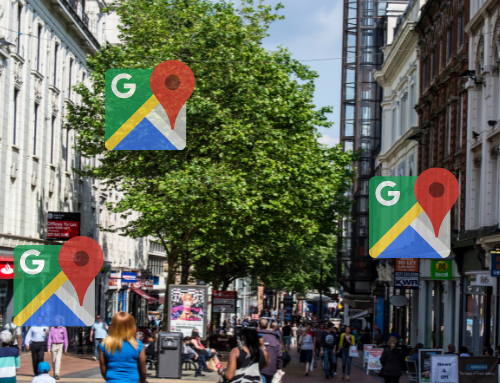what is Google Analytics and what is it used for.
Ask ‘what is Google Analytics and what is it used for’ and you’re really asking why you wouldn’t get data from the world’s leading search engine on the performance of your website.
Google Analytics is essentially the little black dress of website analytics. ‘Born’ in 2005 following the purchase of Urchin Software, the classic and timeless Google Analytics is being used by 55% of all websites on the internet, more than 10 times the next most popular analytics option.
Google Analytics analyses all the website traffic going to the pages on your website in real time. It then generates reports on an easy to read dashboard so you can assess data on the best and worst performing pages. It’s easy to implement with a lot of online tutorials on how to install the required tracking code. You can look at all the reports within any date ranges you want.
Google Analytics also integrates into all the other Google advertising tools including Google Ads, Search Console and Data Studio, as well as external service providers. It can be an integral part of your marketing strategy, giving you a great knowledge base on the performance of your website. A massive bonus is that the standard Google Analytics package is free.
The free package will give the average business a lot of what they need to assess their website performance, and it’s mainly much larger businesses that scale up to the paid package.

7 key Google Analytics reports, and why they matter to you.
There are so many Google Analytics reports that a marketing analytics nut could spend all day wading through and creating insights. If you’re only just setting out on your marketing strategy, this might not be a terrible idea anyway, have fun!
Having said that, these are a selection of 7 key Google Analytics reports that you might want to make a start on.
- Website traffic acquisition report. This will give you a good solid breakdown of the sources of traffic to your website. It initially segments your sources of web traffic into categories of organic search, paid search, email, referral and social media. From there it can break it down even further. For example, if you clicked for more information on the social media traffic, it would then break it down into which networks have driven the traffic – Facebook, LinkedIn, Pinterest etc. If you clicked onto referral, it would list the websites that sent referral traffic to you. In addition to being able to see how many website visitors you get from each acquisition section, you can see how each method is performing in terms of how long people are staying on the website, how many of your webpages in total they look at, the ‘bounce rate’ (how many people leave the website straightaway), and how many of them ‘convert’. (A website conversion could be anything from going to the ‘buy’ page, filling in a contact form, or download a piece of content etc.)This report is important because it enables you to not just see how many visitors you’re driving from each acquisition source, but also how each acquisition source of traffic performs. This can help you allocate your budget.For example, if you’re getting the majority of your traffic from social media adverts but none of those visitors are staying on the website for longer than 15 seconds, then you need to look at adapting those campaigns or spending less in that area. If you’re getting some traffic from organic search and that traffic is staying on your website for 5 minutes, visiting 8 pages and converting 50% of the time, that’s where you need to increase your effort and spend.
- Landing pages report. As well knowing how your website visitors are getting to your content, you also need to see which content they’re actually finding you from. The landing page is the page that someone first arrives on, on your website. The landing pages report looks at how well these landing pages are performing. Like the acquisition report, the landing pages report shows the number of visitors, visit length, number of pages viewed from this page, the bounce rate and conversion rates. In addition, it shows you how many of these visitors are new and how many are returning visitors. This report is important, because you can take a look at the best performing pages as potentially the first impression visitors get of your website and business. Knowing this means that you can look to improve those pages that are under performing.
Seeing these reports in real time means you can analyse the effects of changes very quickly. It also means that if you make any content changes to incorporate a new product or service, you can see if that content change makes a difference in the performance of your page as a landing page almost instantly.
- Mobile report. These reports show you which devices people are viewing your website on. The two reports that make up this section show you the kind of device that your website is being viewed on: mobile, desktop or tablet. Then it can also show you the actual device it’s being viewed on, right down to the model e.g. Samsung SM-G973F Galaxy S10.This report is important because it can drive your website design Many businesses design their website with one particular kind of device in mind. Many B2B companies assume people will be looking at their website at their desk so design with a desktop browser in mind. Many B2C companies assume people will be looking at their website on the move more, so design with a ‘mobile first’ approach. Basing this decision on data as opposed to assumptions can ensure you’re making the right decision. As an additional point, knowing the device your website viewers are using gives you somewhat of an idea of how much money they’re spending on their technology, and so their disposable income.
- Audience reports. There is a lot of other data in the audience reports section, with the mobile and device section being just a small but vital part of it. The general audience reports dashboard gives you something of an overview and a jumping off point. It will give you the size of your audience, new vs returning visitors, bounce rate, average visit length, session numbers and pages viewed per session, all in real time with the ability to specify date ranges. In addition to this you can take a dive into the actual demographics of your website visitors. You can look at the basics like age and gender, as well as location. With regards to location, you can see which language your website is being shown in, the country it’s being viewed from and it will even show you the cities it’s being viewed from. When looking at the location data, you can look even closer at how the traffic from those areas is performing in terms of the kinds of visits they are having and conversion reports.
This report is important because it helps you to get a much bigger picture of the people interested in your business, beyond those that actually buy from you and get in touch with you.
- Users flow report. This is a really nice visual representation to show you the journey that your website visitors are taking through your website. You can see from the landing page, where people then move to within your website and where they exit the site. The great thing about this report is that not only can you specify the date ranges, but the first column can be customised depending on the information you’re most interested in. As default it shows you which country the traffic has come from and then into the landing page and so on. But you can also specify by source of acquisition generically i.e. organic search, social media etc, or more specifically i.e. Facebook, Google Ads, individual referral website etc. You can specify by location down to which city, which device, which browser… the possibilities are very nearly endless and the easy to view visual layout makes it easy to digest.
This report is important because you can map the user journey and most importantly, find out where you’re losing them. If you see them get to a set page and then a large majority of them just fall off, this is a problem area you’ve identified that you need to look at.
- Keyword analysis report. Sadly, when it comes to Google Analytics reports, this report is not what it once was. Time was that you could see which keywords people were searching for when they found your website. However, in 2013 Google changed the way they worked to make all searches encrypted using HTTPS, meaning you don’t get any keyword data from them anymore. This means that any keyword data you get comes from elsewhere and given that Google accounts for over 93% of all search engine use, that’s a significant loss of data. However, there is still a little data to be had and it could well be worth keeping an eye on that to see if people are averagely looking for you by name (branded search) or by keyword (unbranded search.)This report is important because whilst the data might be limited, it still gives you an invaluable insight into what your website visitors are looking for when they search for you, and if they’re finding what they’re looking for.
- Goals report. For every website there are business objectives and goals to achieve. Setting up goals in Google Analytics is feasible with limited technology skills but if you want anything more technical or specific it may be worth considering using a professional. Goals can be anything from clicking on a set page such as the ‘how to buy’ page, submitting a contact us form, watching a video, downloading a document etc. Within your marketing strategy you should have an idea of the key outcomes you want from your business and website, and these should be your goals.The goals report will show how many goal completions there were within date ranges specified by you, which goals were completed the most, in some instances you can see the best performing pages in goal completions, and the acquisition source of your goal completions. This report is important because it very literally lets you know if the website is performing as you want it to do in terms of objectives met.
And all you have to do is insert some easy tracking code?
What Google Analytics is and what is it used for is that it’s an integral marketing strategy tool for anyone looking for their website to be more than just a listing on a search engine. Inserting that easy Google Analytics tracking code is such a short job to do when you look at all the data that’s available to you.
From generic information such as whether people are looking at your site on a desktop or mobile, right down to the age and gender of your prospects, this is an invaluable source of analytics. The fact that you can get all this information with minimal effort and for free makes it an essential for any business looking to optimise their digital marketing (so that’s everyone.)




